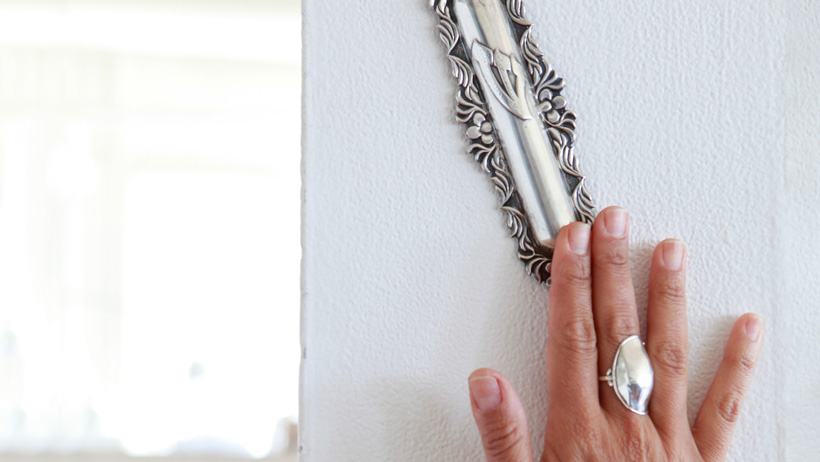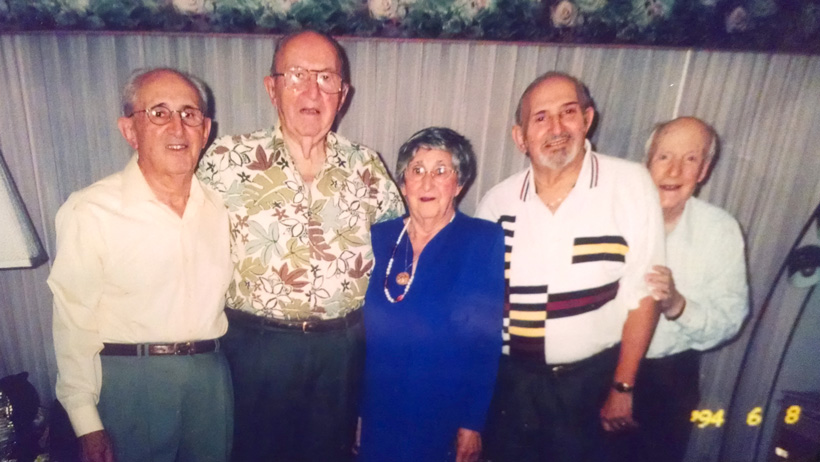A couple weeks ago, I had the honor of delivering the D'var Torah (sermon) at Beth Hillel Congregation B'nai Emunah in Wilmette, the synagogue where I grew up and am now a member. I thought I'd share it with all of you
D'var Torah for Va-etchanan -- Aug. 20, 2016
About a year ago, while at work, I received a text message from my friend Alyssa. She asked if my mezuzah was still on my door that morning.
Alyssa is one of several friends who also lives in my apartment building on Lake Shore Drive in Lakeview. That morning, the mezuzah on her apartment door and that of our friend Debi were taken. It turns out our three front door mezuzahs were among several that were taken that morning from our building.
It was a bit unsettling, especially because it is the only instance in my entire life where I'd knowingly been a target of anti-Semitism. My friends and I contacted the local synagogues, the ADL, the building management, and the police. The thief was never found, and it didn't bother me too much after that. There are some bad people in this world who do mean things, but I can't let it get to me. We all hung up new mezuzot and continued being proud Jews, inviting other Jewish friends for dozens of Shabbat meals and services since then.
I had almost forgotten about this story until I read through this week's Torah portion, Va-etchanan. Va-etchanan is almost like a greatest hits collection of Jewish text -- we read the 10 Commandments, the Shema, and the V'ahavta. As we read in the V'ahavta this morning, our portion reminds us that we should "take to heart these instructions with which I charge you this day. Impress them upon your children. Recite them when you stay at home and when you are away, when you lie down and when you get up. Bind them as a sign on your hand and let them serve as a symbol on your forehead. Inscribe them on the doorposts of your house and on your gates."
These words are so important to our people that we should literally affix them to our bodies (in the form of tefillin) and to our homes (in the form of mezuzot).
I'm sure that many of us in this room have mezuzot on our door posts, but how often do we really notice them, or remember what they say? Inside of most mezuzot is the text from this week's Torah portion -- the Shema and V'ahavta, plus a section from next week's portion, the "V'haya im shamoah" paragraph taken from Parashat Eikev.
Through the Shema, we are reminded to listen, to hear, to affirm our faith in the one and only God. V'ahavta reminds us to love God, with our hearts and our souls (little-known fact that the first song we all learn to play on the piano, "Heart and Soul," is actually a piece of Torah!). We are reminded to teach this to our children. And if we obey these laws, we will be rewarded.
These words, of course, are so important to the Jewish people, but it is nice to have a reminder.
The funny thing to me about the custom of mezuzot is that it is not enough to have a reminder on our front door. It is our custom to have that reminder on every door in the house. It's as if Judaism requires us to put up little Post-It Notes throughout our house … Good morning! You've made it to another day, waking up in your bedroom. Have you remembered to thank God yet? Time for breakfast in the kitchen! Don't forget to think about your Judaism. Want to spend time with your family in the living room? Here's a friendly reminder to follow God's laws and be grateful we're Jewish.
We all know that it's what's on the inside that counts, but the excessive number of mezuzot a Jew might run across in any given week makes me think that it's what's on the outside that counts, too.
Mezuzot are like a secret code that we "Members of the Tribe" can use to tell each other that we're here for each other. I love to go on neighborhood walks in the city with my husband, Adam, and we always get a kick out of counting the mezuzot -- especially when they're on old, elegant, magnificent Lincoln Park mansions. It's exciting to feel that those homeowners something in common with us -- we're part of the same team. Even though I don't know them, we are connected in an unspoken way. It's comforting.
And boy, do we need comfort sometimes. This week is also known as Shabbat Nachamu the first Shabbat after Tisha B'av. This Shabbat, we read the first Haftarah of consolation, the first of seven leading up from Tisha B'av to Rosh HaShanah. Like a warm blanket and a cup of hot chocolate on a snowy night, these Haftarot take us from our darkest times of tragedy recounted on Tisha B'av to our yearly opportunity for a fresh beginning, the chance to start anew.
"Nachamu, nachamu, ami." "Comfort my people, comfort them!" God says to the prophets, instructing them to comfort us with words of hope in this week's Haftarah portion. I feel that comfort when I see mezuzot. In a world with so much persecution - both in the times of the destruction of the temples and even now -- it is inspiring to see mezuzot on doorposts. We are telling the world that we are here, we are strong, we are united as a community. We are proud of our identity and will show it on the outside of our homes. What could be more comforting?
As I think about mezuzot as ritual items that go on the outside of our structures, I think about other items on the outside of our structures. As a Jewish professional, my passion is building community, and specifically making everyone feel welcomed. Our Jewish institutions all have mezuzot on our exteriors, but how big are our proverbial welcome mats?
BHCBE is probably one of the most welcoming congregations I've seen, doing an excellent job at making newcomers feel at home. But I often like to remind members of any community that our work as welcomers is never complete.
On our synagogues, our community centers, even on secular places -- how easy is it for people to find us? Is the name of our congregation clearly labeled? Where is the front entrance? How easy is it for people to find a parking spot? Many of you I'm sure will recall fondly BHCBE's quirky parking lot sign: "No right turn; right turn permitted on Shabbat and holidays."
Once inside, are newcomers greeted by a friendly face, a security guard, or no one? Upon entering the sanctuary, will they know what is happening in the service? I absolutely love our congregation's new laminated seat cards explaining the most mysterious parts of our service, and I hope that other congregations follow this model too.
Sometimes even a synagogue building can be intimidating to someone who is not an integrated member of the community. Can we as a Jewish community do better at rolling out the welcome mat when we're at the grocery store or on the soccer field?
Thinking about mezuzot, I hope that together, we can think about other kinds of symbols we can put on our physical building that send a message of welcome and comfort.
After the Great Mezuzah Incident of 2015, I felt a little uneasy and a little unsafe. But the overwhelming emotions I felt were those of comfort and support. With the support system of my neighbors and the Jewish community at large, it felt nice to know that Jews stand up for each other. And every time I see a new mezuzah go up in my apartment building, I get a little twinge of excitement. A new neighbor has moved in, and my community -- OUR community -- has gotten even wider.


.jpg?n=1839)

.jpg)





.jpg)



